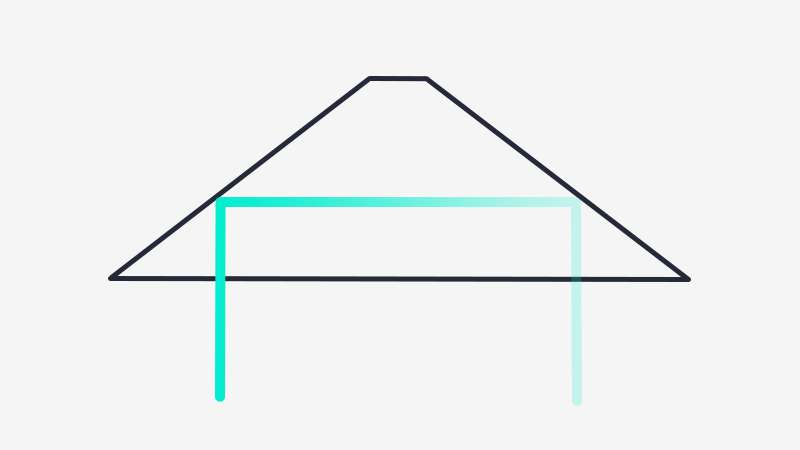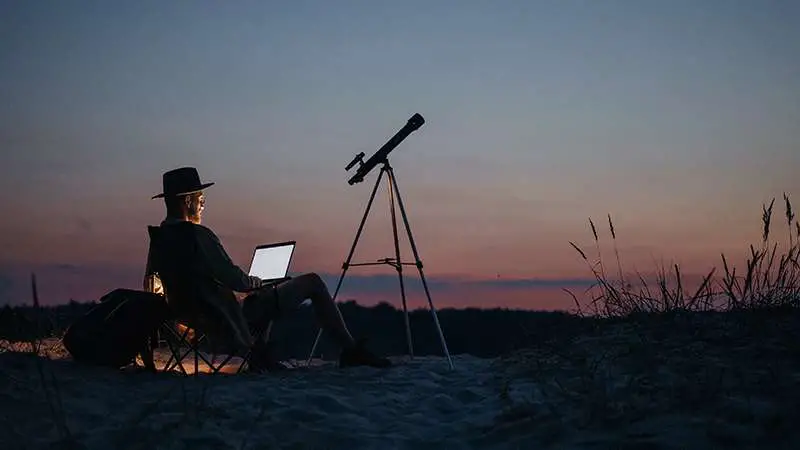You were probably surprised that your new telescope was upside down the first time you looked through it. You paid good money for it! And now you’re asking yourself, “Why is my telescope upside down?”
Here’s the good news! Your first telescope is perfectly OK. The design is for a good reason. It’s typical for telescopes for astronomical viewing to show you upside-down or flipped images. I’ll explain why in this article by breaking it up into multiple sections based on the different types of telescopes and image rectifiers available to you.
In this article, you get
An understanding of why the orientation of the images may not be important
Why is astronomical use different from land use
What you could add to your telescope to flip your image
By the end of this article, you’ll have a solid understanding of why your telescope image is upside down, and more!
Let’s dive right in.
Recommended For You
ARE TELESCOPES SUPPOSED TO BE UPSIDE DOWN?
This is an excellent question, and the answer depends on what you’re trying to do with your telescope.
If you’re using it to view things on the ground, it will make sense to have the image in the correct orientation. However, what is the proper position when viewing night sky objects through a telescope?
Which way is up in space?
WHY NOT CORRECT THE IMAGE?
There are ways to correct the image of your astronomical objects. Still, as I’ll explain, it’s not in your best interest to do so in your telescope. Let me first explain the particular diagonals that are available.
REFRACTOR TELESCOPES
A simple refractor has an objective lens at the front of the telescope and an eyepiece holder at the back. To learn more about early refractor telescope design, read my article Keplerian vs Galilean Telescope.
Take a standard 20 mm eyepiece, insert it directly into the back of the telescope, and look straight through it. You will see an inverted image. The image will be upside-down as well as a mirror-reversed left-to-right.
STAR DIAGONALS

One way to change the orientation of your telescope images is to add a star diagonal.
Star diagonals contain a mirror or prism that flips the inverted image upside up. However, the converted image remains reversed from left to right.
You can insert a star diagonal into the eyepiece holder of your scope with the eyepiece going on top of it.
AMICI PRISMS

On the other hand, Amici Prisms bounce the light inside a few times, so when the light comes out, you get a final image that is both flipped right side up and from left to right. In other words, it’s a 100% correctly oriented image.
When looking for a telescope diagonal, specifically, you can tell it is an Amici Prism thanks to a ball-like structure, as opposed to a triangular one.
Amici Prisms correct the image 100%.
ERECT-IMAGE PRISM DIAGONALS

A 45-degree Erect Image Prism Diagonal is also available for your simple refracting telescope.
It’s a prism that holds the telescope eyepiece at a different angle. The angle is ideal when using astronomical telescopes for terrestrial observation.
It allows you to look up slightly and check out the target you’re trying to see.
It also gives you a 100% correctly oriented image.
Amici and Erecting Prisms also work on a Cassegrain telescope, like the Schmidt–Cassegrain or Maksutov-Cassegrain. Schmidt–Cassegrain refractors typically only come with a 90-degree mirror or prism diagonal, meaning you will still need to get an Amici or Erecting prism.
REFLECTOR TELESCOPES
Newtonian telescopes have a primary mirror at the back and a small secondary mirror on the inside. The redirected light goes to the eyepiece on the side of the reflecting telescope. If you’re new to reflecting telescopes, read my article How to Tell if Telescope Needs Collimation.
The Newtonian reflector telescope design has a very short back focus. In other words, the amount of throw you get when you turn the focus knobs is very short to adjust the eyepiece in the appropriate spot.
PORRO PRISMS

Triangular prisms take up a lot of back focus. It would help if you had more inward focus travel. Instead, you will need to use a 20-millimeter erect image eyepiece that has a significantly longer body and sits much lower in the focuser. The added length allows the light through the prism while still bringing your eyepiece to the appropriate point so that it focuses properly.
A Porro Prism installs inside the eyepiece. It allows you to flip the image inside the scope, not between the eyepiece and the scope.
When the eyepiece is in the scope, the prism intercepts the light path, eliminating the back focus issue and allowing you to be properly focused.
These types of eyepieces, however, only work with long focal-length lenses because there needs to be more room in the body to use the prism in a higher-powered scope.
Using this type of prism will often result in a truncated image and not allow you to see the entire field of view.
WHY DO ASTRONOMERS DO THIS?
It would make more sense to build lenses into the telescope to create a correct image in the first place, so why don’t they do that? There are two main reasons for this.
ASTRONOMERS LIKE TO LOOK AT FAINT OBJECTS
Like other amateur astronomers, you want to look at deep sky objects, like faint galaxies or nebulae. You want to get every one of those photons from that faint celestial body straight into your eyeball.
When light strikes a glass piece like a prism, mirror, or any other glass piece, two things occur:
- Some of the light gets bounced off of the glass
- The rest of the light passes through the glass
DIMINISHING RETURNS
Most light will go through the prism if you have a prism. A small percentage of the light gets absorbed or reflected by the glass, which means you get some light loss from the object.
When the light gets to your eyepiece, it is about 10% dimmer. The extra glass has absorbed or rejected the rest of the photons.
The more glass you put between your eyeball and the object you are looking at, the higher the chance that less light reaches you.
Astronomers need as much light as possible to study the faint details of the night sky.
PRE-BUILT-IN GLASS PIECES
A spotting scope or pair of binoculars is mainly for terrestrial use and has an in-built prism.
The built-in prisms also lose light due to absorption before reaching the eyepiece. Still, because using a finder scope to view terrestrial objects is mainly done in daylight, you aren’t missing much detail for terrestrial viewing during the day.
So, light loss through a prism isn’t an issue for daytime use.
HOW TO FIX UPSIDE DOWN TELESCOPE IMAGES FOR ASTROPHOTOGRAPHY

As I mentioned above, there is a better option for fixing an upside-down image for astrophotography.
You should avoid having the light rays from your already faint target need go through an unnecessary additional lens.
You can flip the final image you capture using your preferred editing software.
Who correctly defines which way is up in space?
The best way is to capture as much light as possible and minimize the chance of optical aberrations like chromatic aberration.
CONCLUSION
There you have it! Now you know why your telescope image is upside down.
If you want to fix it, you have two options.
Either do it in the telescope, at the risk of having a less bright image. Or do it afterward in your photo editing software if you want to.
If you’re brand new to telescopes, read my articles Types of Telescope Mounts, Equatorial Telescope Mount vs AltAzimuth and How to Clean Telescope Mirror: 11-Step Guide.
For a bit of fun, read my article DIY Solar Filter Telescope.
FREQUENTLY ASKED QUESTIONS
WHO CAME UP WITH THE TELESCOPE?
German-Dutch eyeglass maker Hans Lipperhey invented the refracting telescope. The main reason for this is that he was the first to try to get a patent for the telescope. It’s unknown if he was the first to construct a telescope.
WHO MADE THE FIRST TELESCOPE WITH MIRRORS?
Sir Isaac Newton was the first to create a functional reflecting telescope using mirrors. A reflecting telescope is an instrument that forms images by reflecting light off of one or more curved mirrors.




